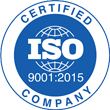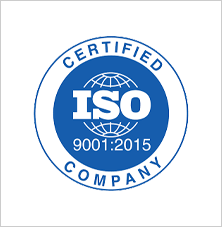Q IS FOR QUALITY, A IS FOR ASSURANCE

A lot of emphases is placed on quality. A formal quality management process is established and implemented by the organizations. But to achieve this, its people must be instilled with the idea of quality. In a perfect world, it should become a part of how you do business and not just something you read about.
A company’s quality should be viewed as one of its fundamental business principles. Every employee is responsible for ensuring quality. Making strategic decisions should be based on a carefully constructed quality management plan. Quality management plans include many variables dependent on numerous internal and external factors. To reap maximum benefits with limited resources, organizations are always looking at new ways to improve their process.
What is Quality Assurance?
A quality assurance approach that looks beyond the tests and data collection is needed to grasp the relevance of what you’re examining to your goal and how to apply it to drive improvement. In order to drive improvement.
1. Commit to it
It is essential to start on the right foot by having the right attitude. There is no such thing as change for its own sake, and many do not like it at all, but it is the knowledge of the need for change that helps your organization to thrive. Every employee must be on board emotionally and mentally to the implant, and the quality processes must be continually evaluated, whether they are new or already implemented.
2. Track Mistakes
Today’s business world is full of mistakes, whether a result of inconsistent communication or errors in processes.
A key step is identifying errors as early as possible before they become a larger problem. To reduce customer frustration, knowing when and how they may occur as well as having the ability to correct them quickly and seamlessly is key. Mistakes are inevitable. Incorrect delivery addresses, wrong labeling, or suppliers who don’t show the same respect for customers as you do, are sure to leave your complaints department empty-handed.
3. Identifying Faults
The best way to find problems as early as possible is to identify them before they become a larger issue.
In any organization’s quality management program, it is crucial to capture and identify quality concerns in products and services. Simpler, cleaner designs can reduce the likelihood of faults in a product, or for an industry that relies heavily on telephone service, a more functional and user-friendly service.
Customer expectations have changed, and good enough no longer suffices.
4. Target Behaviors
The goal of quality assurance is noble regardless of whether it is perceived as such. The best way to demonstrate your commitment to your customers is to commit yourself to their success, but even more important is the way your staff behaves to ensure that they stay with you, instead of switching to your competition.
It is important to have a positive attitude. Despite those things, it’s important to not focus on flaws but to instead adopt a customer-centric mindset for the betterment of all.
5. Monitors are mirrors.
Here’s the bottom line, let’s be clear. The goal of quality monitoring is not to point fingers. Replacing it should be a combination of performance management, training, and high-level communication and focused on offering the best outcome to customers.
Give it a try. Get your team involved, and they may come up with ways to monitor quality themselves. People who are involved and connected will become accustomed to understanding the importance of quality.
Your customers will feel the impact of your efforts.
6. Build Customer Feedback In
Organizations may find this frightening. Think of volunteering as a way for people to let you know what they think. Sounds crazy, doesn’t it?
This isn’t so crazy. Without knowing what the public thinks about your business, how will you know if it is successful?
You may find your employees will run for the nearest fire escape if they see that fevered look in your eye. Take a deep breath and introduce a method for customers to express their opinion. They may surprise you with their feedback.
7. You and Your Systems
Have you examined how you manage QA recently?
For your organization to move forward on this issue, do you even have the right processes in place?
Software with advanced analytics can take an organization into a world of headache-free compliance and excellent customer service, too.
The first step in supporting quality assurance must involve implementing a set of processes and monitoring enablers if an organization is serious about providing it with the attention it deserves. No matter what field you are in, whether you’re a manufacturer, distributor, or service provider, you should consider quality assurance to improve, not to set unrealistic expectations or to demand perfection. The ultimate goal is to improve the experience of your customers. It would be impossible to run your business without your customers.
Conclusion
Word of mouth travels fast these days, and customer expectations are higher than ever!
Last but not least, treat your quality assurance framework as a living document. Do not be afraid to change it if it is no longer providing you with information you value. I hope you find this article helpful. Don’t hesitate to contact us if you need assistance, and we will respond within 24 business hours.

















